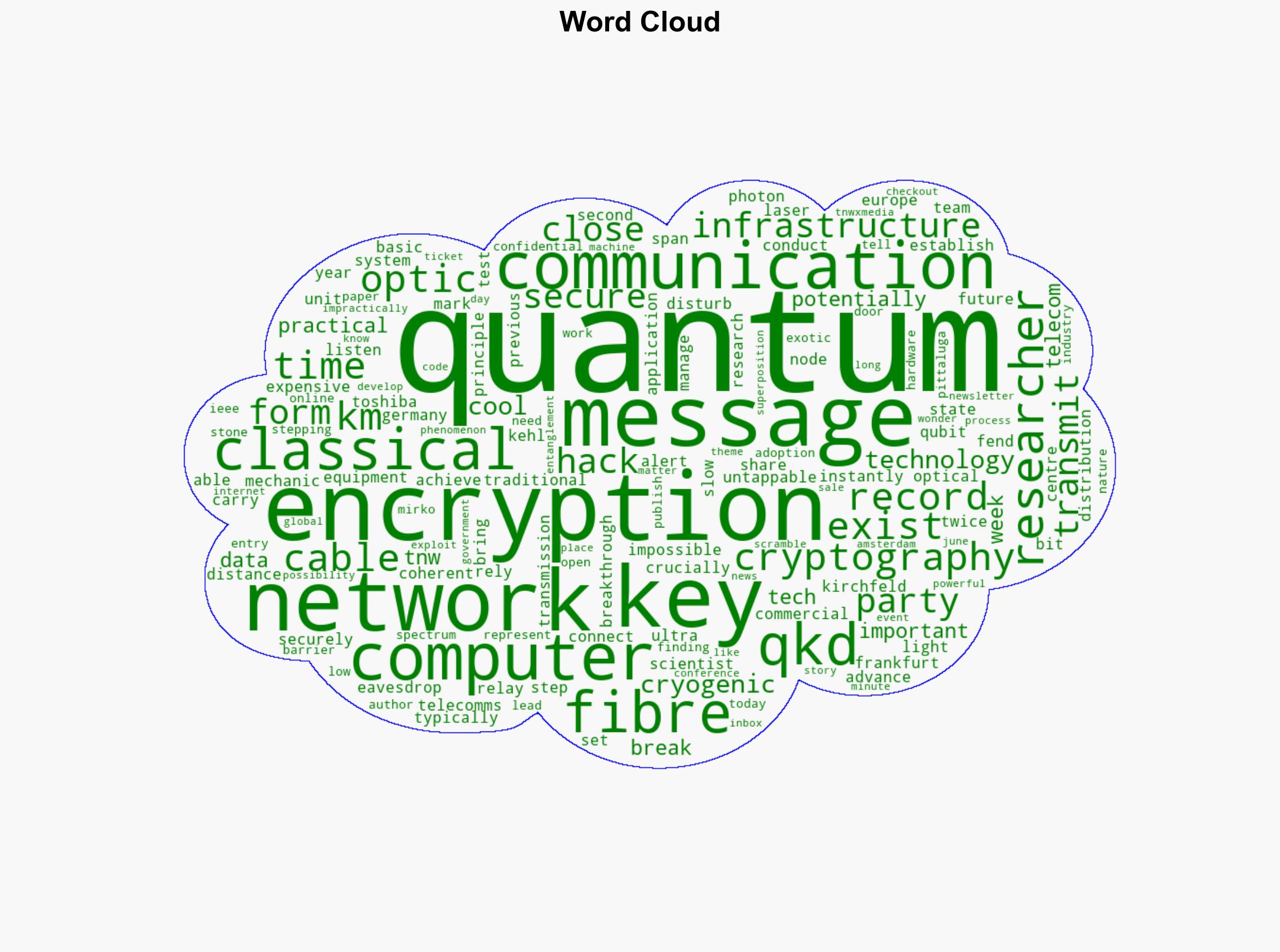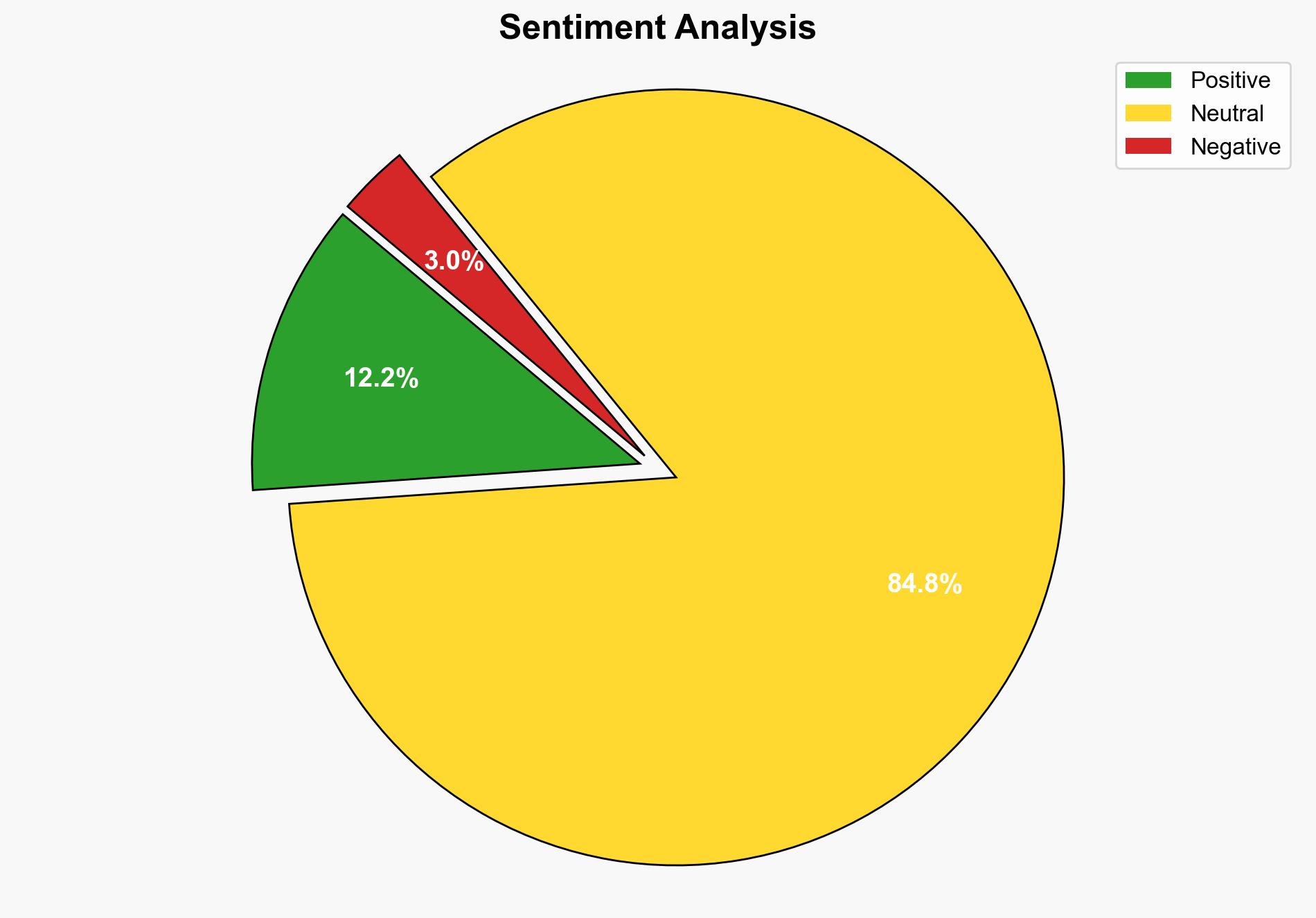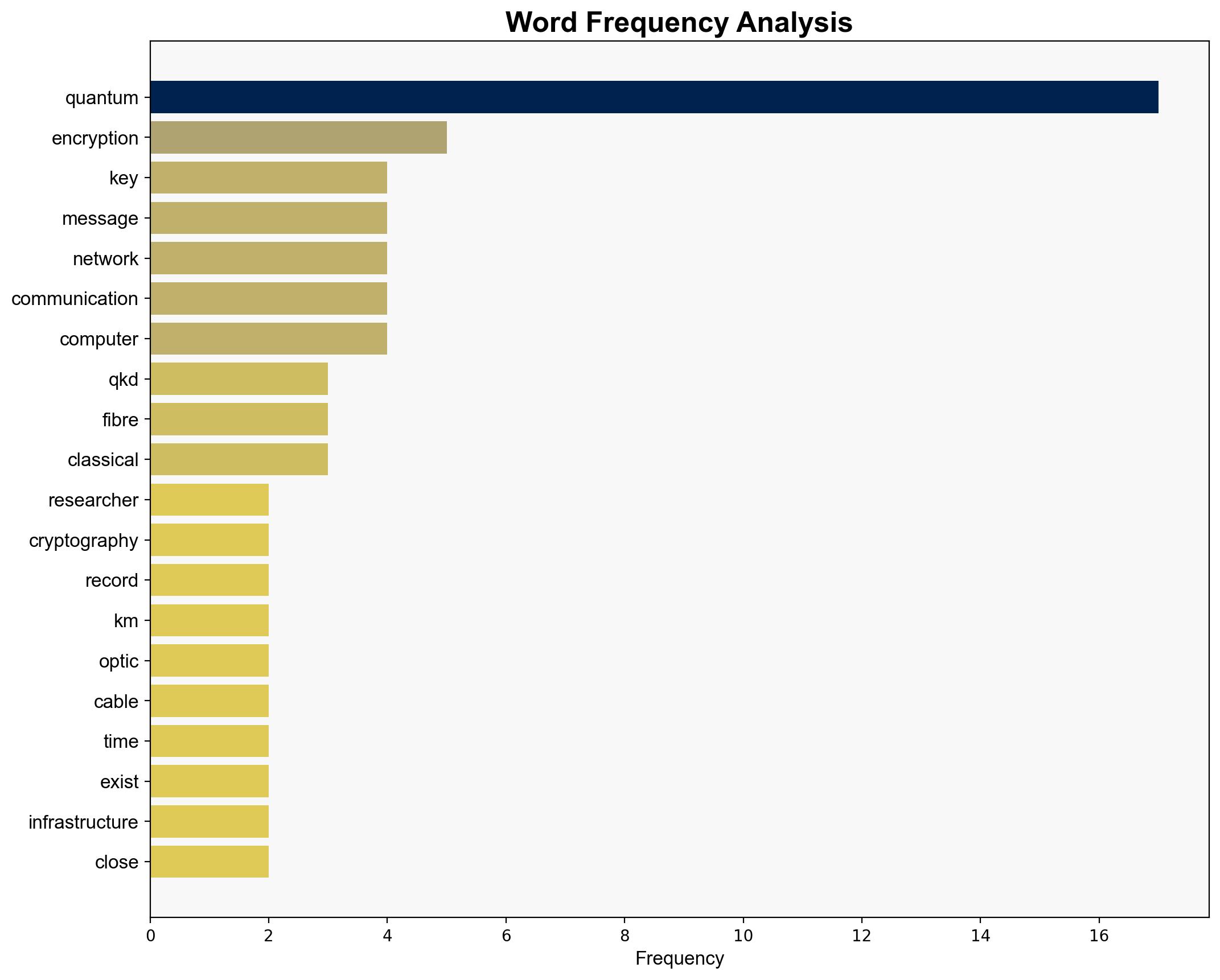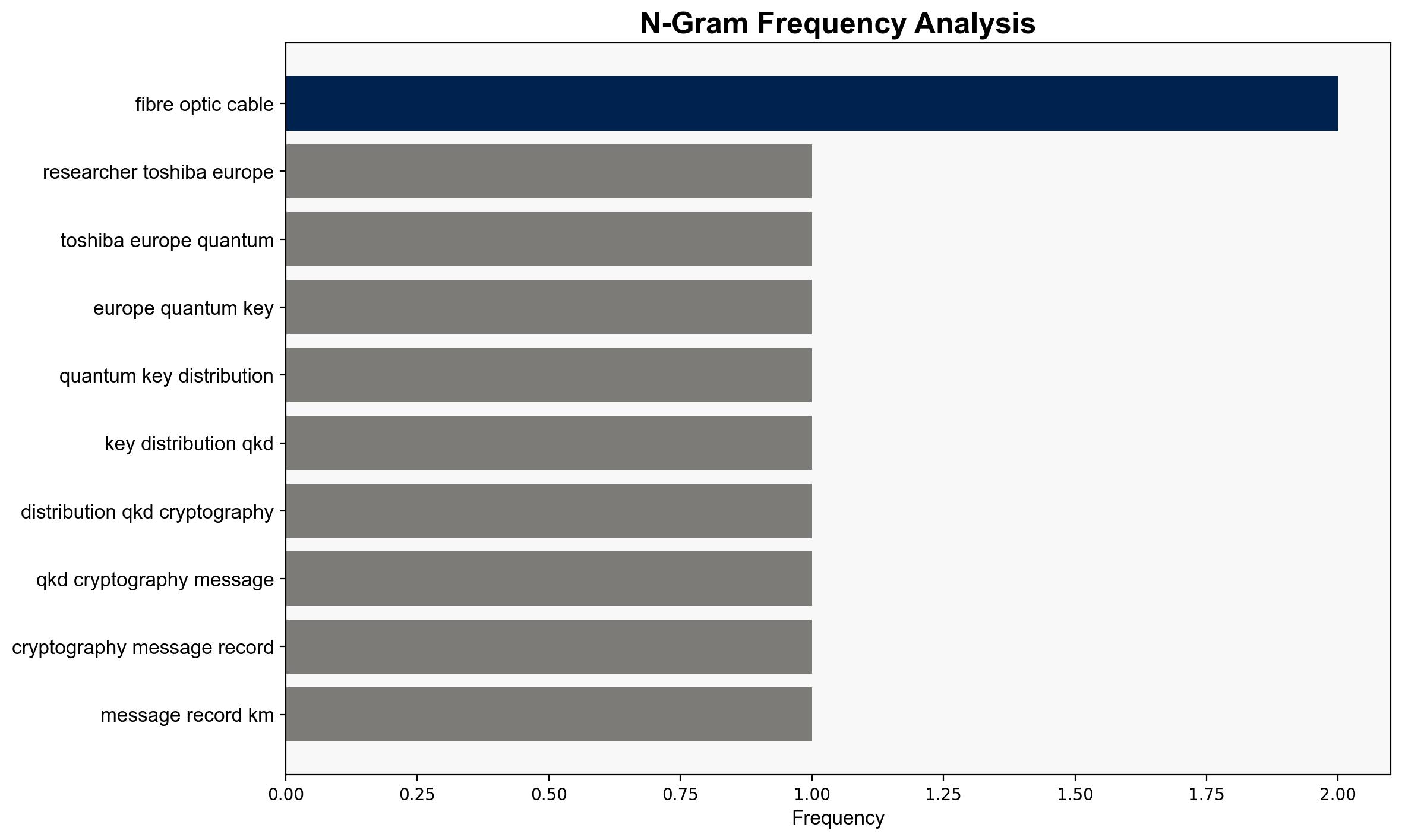Untappable encryption edges closer after quantum messaging breakthrough – The Next Web
Published on: 2025-04-24
Intelligence Report: Untappable encryption edges closer after quantum messaging breakthrough – The Next Web
1. BLUF (Bottom Line Up Front)
Recent advancements in quantum key distribution (QKD) by researchers at Toshiba Europe mark a significant step towards ultra-secure quantum encryption. This breakthrough leverages existing telecommunications infrastructure, potentially revolutionizing secure communications by making them impervious to hacking attempts from both classical and quantum computers. The development could significantly impact national security and cybersecurity strategies.
2. Detailed Analysis
The following structured analytic techniques have been applied to ensure methodological consistency:
Analysis of Competing Hypotheses (ACH)
The primary hypothesis is that the integration of quantum messaging into existing fiber optic networks will enhance security against future quantum computing threats. Alternative hypotheses, such as the continued reliance on classical encryption methods, were tested and found less viable given the rapid advancements in quantum computing capabilities.
SWOT Analysis
Strengths: Utilizes existing infrastructure, reduces costs, and enhances security.
Weaknesses: Current requirement for specialized equipment and expertise.
Opportunities: Potential for widespread adoption in telecommunications and data security sectors.
Threats: Possible delays in industry adoption due to technological complexity and cost.
Indicators Development
Monitor advancements in quantum computing capabilities and the deployment of QKD technologies in critical infrastructure sectors. Look for signs of increased investment in quantum research and development.
3. Implications and Strategic Risks
The integration of quantum messaging could disrupt current cybersecurity paradigms, necessitating a shift in defense strategies. The reliance on quantum encryption may also lead to geopolitical tensions as nations race to secure quantum capabilities. The potential for a security gap during the transition period poses a strategic risk.
4. Recommendations and Outlook
- Encourage investment in quantum research to maintain technological parity with global competitors.
- Develop transition strategies for integrating quantum encryption into existing security frameworks.
- Scenario-based projections:
- Best case: Rapid adoption leads to enhanced global cybersecurity.
- Worst case: Slow adoption results in vulnerabilities during the transition period.
- Most likely: Gradual integration with increased focus on research and development.
5. Key Individuals and Entities
Mirko Pittaluga, lead author of the research paper, is a notable individual in this breakthrough.
6. Thematic Tags
(‘quantum encryption, cybersecurity, telecommunications, quantum computing, national security’)





